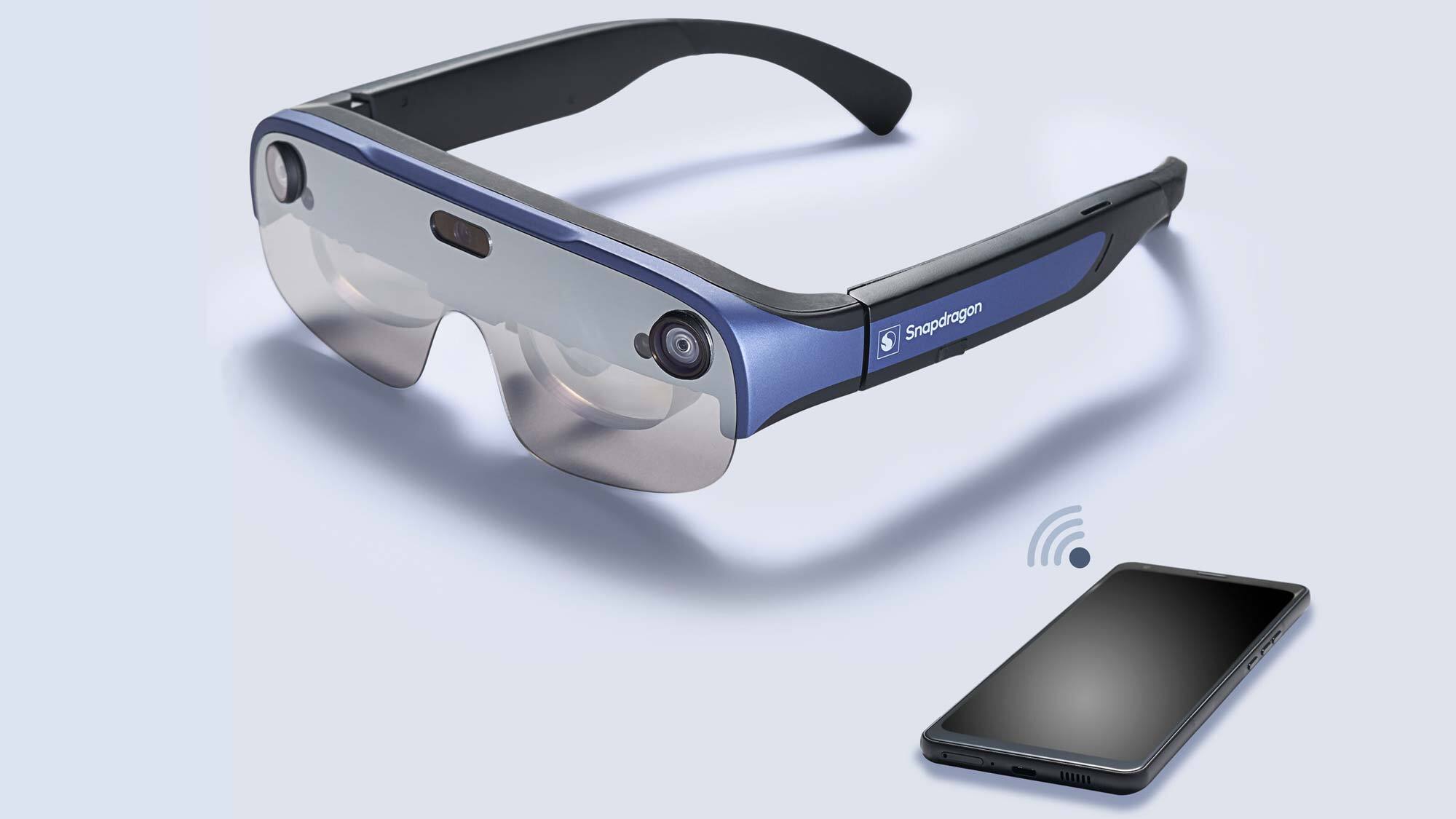Qualcomm has made a wireless AR headset — will it help others take on Apple?
Qualcomm's wireless AR headset can be a guide for other device makers

Virtual reality has succeeded in cutting the wires — look no further than gaming on untethered headsets like the Oculus Quest 2. But the ultimate goal should be for more types of headsets to shed their wired connections, while remaining light enough to easily wear.
Qualcomm wants to lead the way, and it's got showing off the headset that it thinks device makers can take their cues from. Qualcomm’s Wireless AR Smart Viewer, unveiled at an event in China today (May 20) looks to be a portal into the metaverse by overlaying virtual images on top of the real world, with no wires involved.
The Wireless AR Smart Viewer isn't a shipping product you'll be able to buy in stores. Rather, the audience is companies that want to make their own augmented reality viewers. Using Qualcomm's design as a reference point, those device makers can churn out their own wireless headsets.
Reference designs are old hat for Qualcomm, which made its first headset prototype in 2016. What's new here is the light, streamline design built to showcase what's possible with the help of the chip maker's Snapdragon XR2 silicon. Launched in 2019, the XR2 promises killer VR and mixed reality performance with 5G support. It's the silicon powering the Oculus Quest 2 after all..
The AR Smart Viewer does offer a functional design. The headset itself is more like lightweight glasses — quite a contrast from bulky headsets you're probably used to seeing. Qualcomm also claims its viewer offers a balanced weight support so wearing it for a long time should be more comfortable.
The virtual screen features a dual micro-OLED binocular display with a resolution of 1920 x 1080 per eye and frame rates up to 90Hz. It also has a no-motion-blur feature so while the image quality is clear, it will make users feel less dizzy as well.
Qualcomm’s AR glasses also come with head and hand tracking, along with gesture recognition for AR accuracy. Along with the XR2 that powers the wireless technology there is also a wireless split processing architecture that distributes computing workloads between the phone and AR glasses. This would ensure there’s no detectable lag between the phone and headset — less than 3 milliseconds of latency, Qualcomm claims. The glasses also support Wifi 6 and Bluetooth via Qualcomm's FastConnect 6900 technology.
Get instant access to breaking news, the hottest reviews, great deals and helpful tips.
The XR2 silicon enables a lot of the functions the reference design can pull off, including support for seven concurrent cameras along with a dedicated computer vision processor and low latency. That latter feature promises a seamless blend between the real and virtual world.
For sustained XR consumption, Qualcomm offers built-in power modes to the reference design's customers.
The timing may be coincidental, but Qualcomm's AR Smart viewer arrives as rumors are picking up about Apple’s AR/VR headset. That mixed reality headset could be arriving in 2023, though a prototype has reportedly been shown to Apple's board. Early rumors suggest that this particular device will be a standalone offering that connects wireless to the iPhone or Mac; Apple Glass could also be in the works as a mixed reality wearable, though it's supposedly further down the road.
Regardless of when Apple enters the AR market, it could face increased competition from devices built using Qualcomm's wireless reference design for inspiration. We'll have to wait and see which device makers adapt Qualcomm's designs for their own products, but it is clear that the portal to the metaverse is untethered and not too far away.

Sanjana loves all things tech. From the latest phones, to quirky gadgets and the best deals, she's in sync with it all. Based in Atlanta, she is the news editor at Tom's Guide. Previously, she produced India's top technology show for NDTV and has been a tech news reporter on TV. Outside work, you can find her on a tennis court or sipping her favorite latte in instagrammable coffee shops in the city. Her work has appeared on NDTV Gadgets 360 and CNBC.
